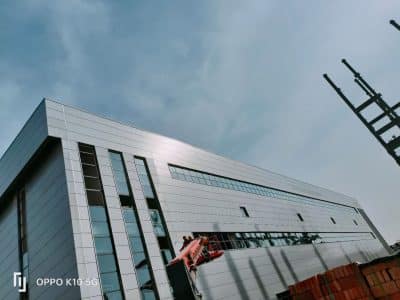
Sandwich Panels Manufacturing for Japan
Parameter PU / PIR Panels Rock Wool / PU-Sealed Panels Core Type Polyurethane or Polyisocyanurate Mineral Wool (100–120 kg/m³) Fire

In April 2025, China’s customs authorities introduced tough new measures to clamp down on “invoice buying” exports, a practice now under tight restrictions, especially in industries like steel. This change marks a significant turn in China’s trade approach, with export prices projected to increase by 9% to 14% across the board, potentially altering global supply chains and economic dynamics.

“Invoice buying,” known as mai dan chu kou, has been a longstanding element of China’s export framework. It enables exporters to channel goods to international markets through third-party agents or shell companies, dodging taxes, quotas, or subsidy caps. This tactic has historically fueled China’s export-led growth, allowing smaller businesses to bypass bureaucracy and compete worldwide. Yet, it has also drained tax revenues and sparked “dumping” complaints from trade partners, particularly over inexpensive steel saturating foreign markets.
These regulations address both internal and external forces. Domestically, China is pivoting from an emphasis on export quantity to higher-value sectors and technological progress, signaling reluctance to keep propping up foreign markets with low-cost goods and stepping back from its “world factory” identity. Internationally, rising tariffs and critiques from the U.S., EU, and others about market distortions likely prompted this move, casting China as a more accountable trade participant. The anticipated 9% to 14% price rise stems from stricter oversight and the elimination of undervalued export reporting.
The steel industry underscores what’s at play. In the past, invoice buying flooded global markets with cheap Chinese steel, keeping prices down and fostering reliance among importing countries. Similarly, the sandwich panel sector—encompassing products like PU/PIR sandwich panels, rockwool sandwich panels, and cold storage panels—feels the strain. Previously, invoice buying kept these panels competitively priced for construction and cold chain industries in regions like Southeast Asia and the Middle East. With stricter controls, exports of sandwich panels may decline, and the 9% to 14% price hike could raise costs for overseas buyers, potentially slowing industrial and commercial projects that rely on these energy-efficient, eco-friendly materials. Now, with tighter controls, steel exports could shrink, and the price jump may hit nations in Southeast Asia or Africa hardest, driving up costs for infrastructure and production. Western steel producers could see an edge from less competition, provided they can boost output to fill the gap.
In the short term, the effects are sharp. Inside China, small traders and manufacturers dependent on invoice buying are grappling with survival, as the 9% to 14% price surge tightens margins and cuts orders. In the long run, though, this could push companies toward regulatory compliance and innovation, spurring industrial advancements.
On a global scale, this shift highlights China’s economic reorientation—from a budget exporter to a rules-driven, sustainable force. The price hike will cascade through trade systems, compelling importers to rethink budgets or find substitutes. For global traders and investors, adjusting to elevated costs may pose challenges, but a more disciplined Chinese market might offer lasting gains.
This policy sparks critical questions: Is it a step toward China’s economic autonomy? Or will it heighten trade friction? With export prices poised to rise 9% to 14%, the fallout in 2025 will echo far beyond the year’s close.

Parameter PU / PIR Panels Rock Wool / PU-Sealed Panels Core Type Polyurethane or Polyisocyanurate Mineral Wool (100–120 kg/m³) Fire

Parameter PU / PIR Panels Rock Wool / PU Edge Panels Core Type Polyurethane or Polyisocyanurate Mineral Wool, 100–120 kg/m³

Item Specification Structure Three layers:① Upper layer: Steel sheet② Inner layer: PU foam③ Bottom layer: Steel sheet Steel Thickness 0.4mm
